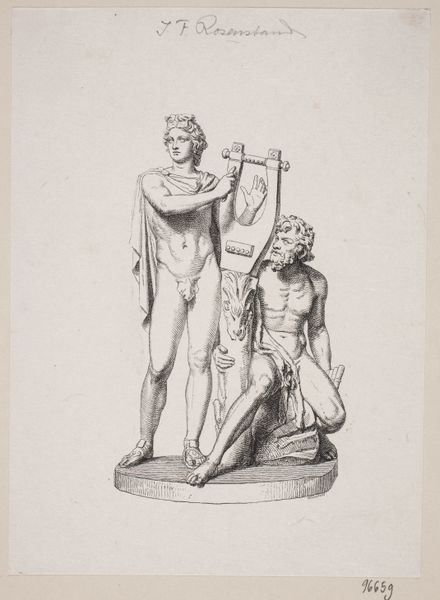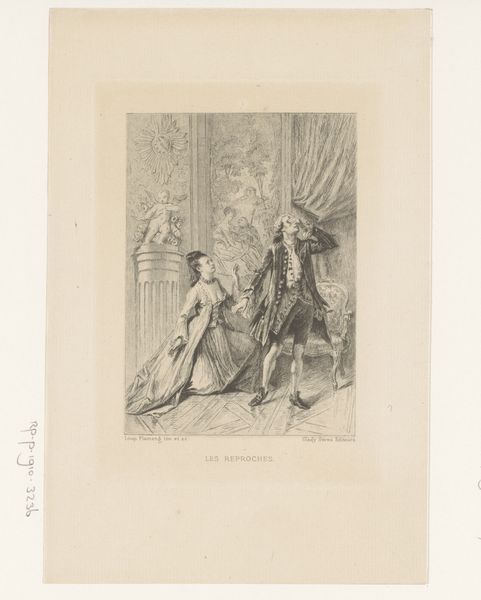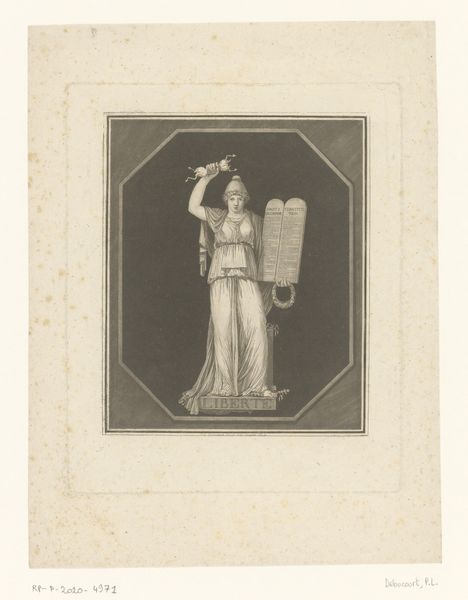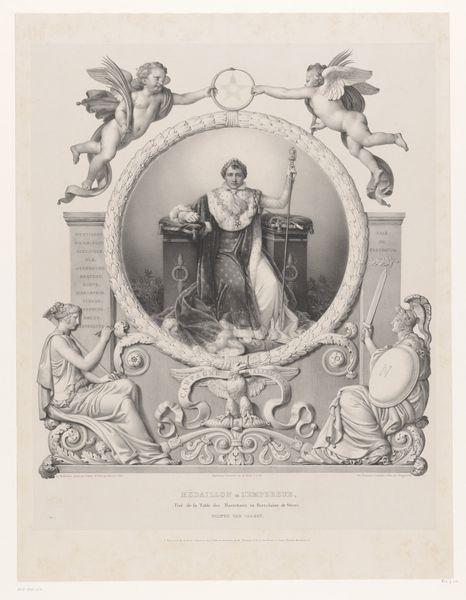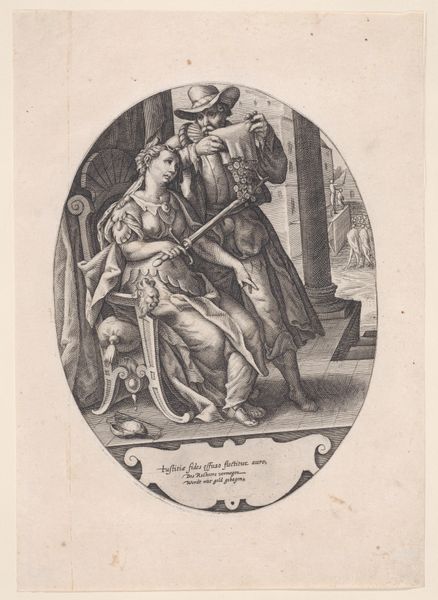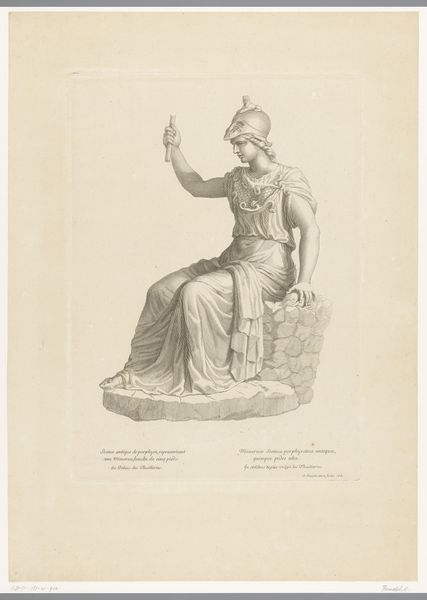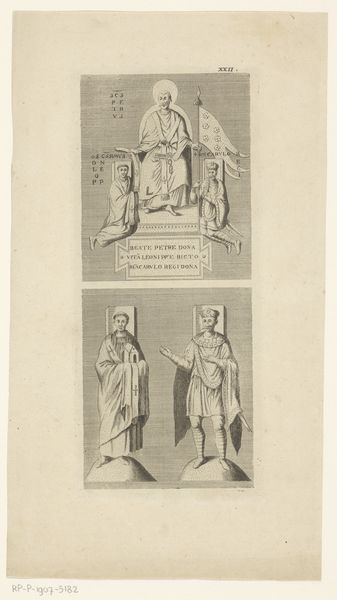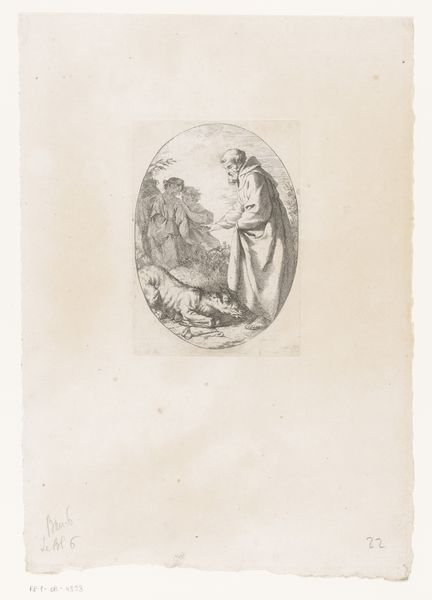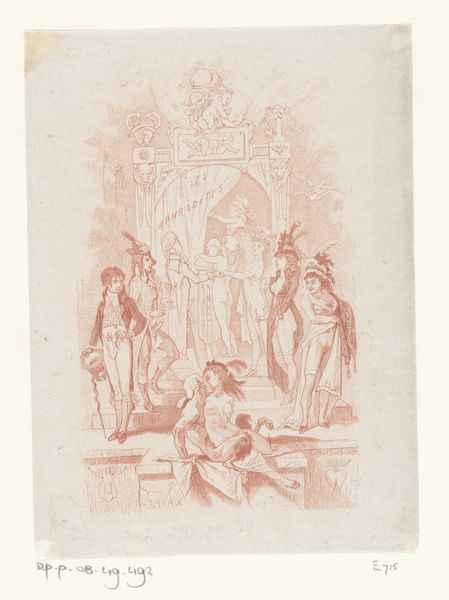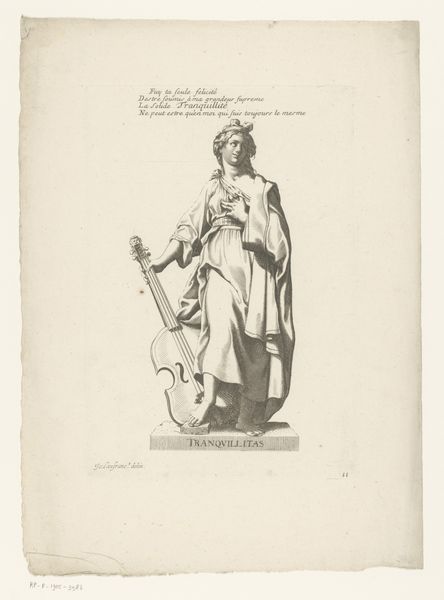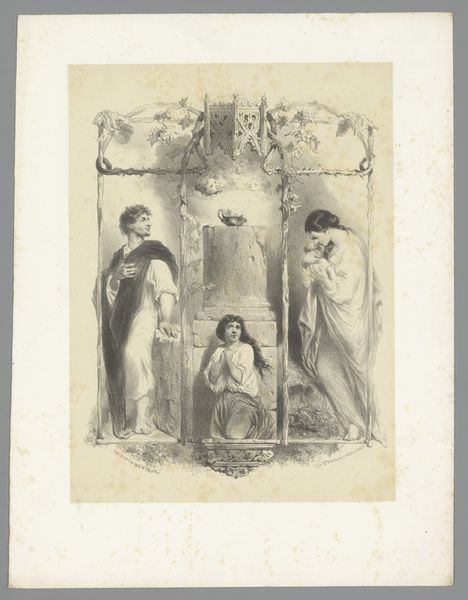
print, woodcut, engraving
# print
#
classical-realism
#
figuration
#
form
#
woodcut
#
line
#
history-painting
#
engraving
Dimensions: 250 mm (height) x 168 mm (width) (bladmaal)
Curator: Stepping into the world of classical myth, we have "Apollo og Marsyas," a print made sometime between 1820 and 1887. Rosenstand is the artist behind it, a study in the tragic rivalry between god and mortal, immortalized through the lines of woodcut and engraving. Editor: Hmm, a stark black and white. Apollo seems almost dismissive, a cool indifference etched onto his features, while Marsyas is…suffering. You feel it in the slumped posture, the furrowed brow. It’s not just a visual; it’s an emotional hit. Curator: Precisely. What’s so powerful is how Rosenstand has chosen to depict a pivotal point in this classic narrative. We see the moment where Apollo challenges Marsyas to a musical duel – a challenge, we know, with brutal consequences for the satyr, when, inevitably, Apollo wins. It serves almost as a memento mori of hubris and divine power. Editor: And hubris isn’t often attractive, is it? Apollo's idealized form radiates a kind of detached cruelty. What's striking is the raw emotion channeled through line and form. You can sense the human pain contrasted by divine impassivity, even across the gap of history that divides artist from mythical subject, or the lack of color! Curator: The story resonates because it taps into deeper societal concerns – who has the right to judge art, who controls taste? Throughout history we see those arbiters deciding what becomes art and what fails; or more pointedly who. The very act of depicting the Greek gods – the heroes and the vanquished – has historically always been intertwined with social agendas. Editor: It’s fascinating how art can act as a mirror, not just to the myth it represents, but to the anxieties of its own time, as you put it. When I look at it, I cannot help but notice it mirrors those artistic judgements; so coolly precise. Is the judgement in this classical print of 'value'? Curator: Well, perhaps this is the right moment for a little reflection: whether its themes of judgment and ambition are, indeed, also relevant today. Editor: Yes, a sombre reflection perhaps to draw from a somber study. Thank you!
Comments
No comments
Be the first to comment and join the conversation on the ultimate creative platform.
